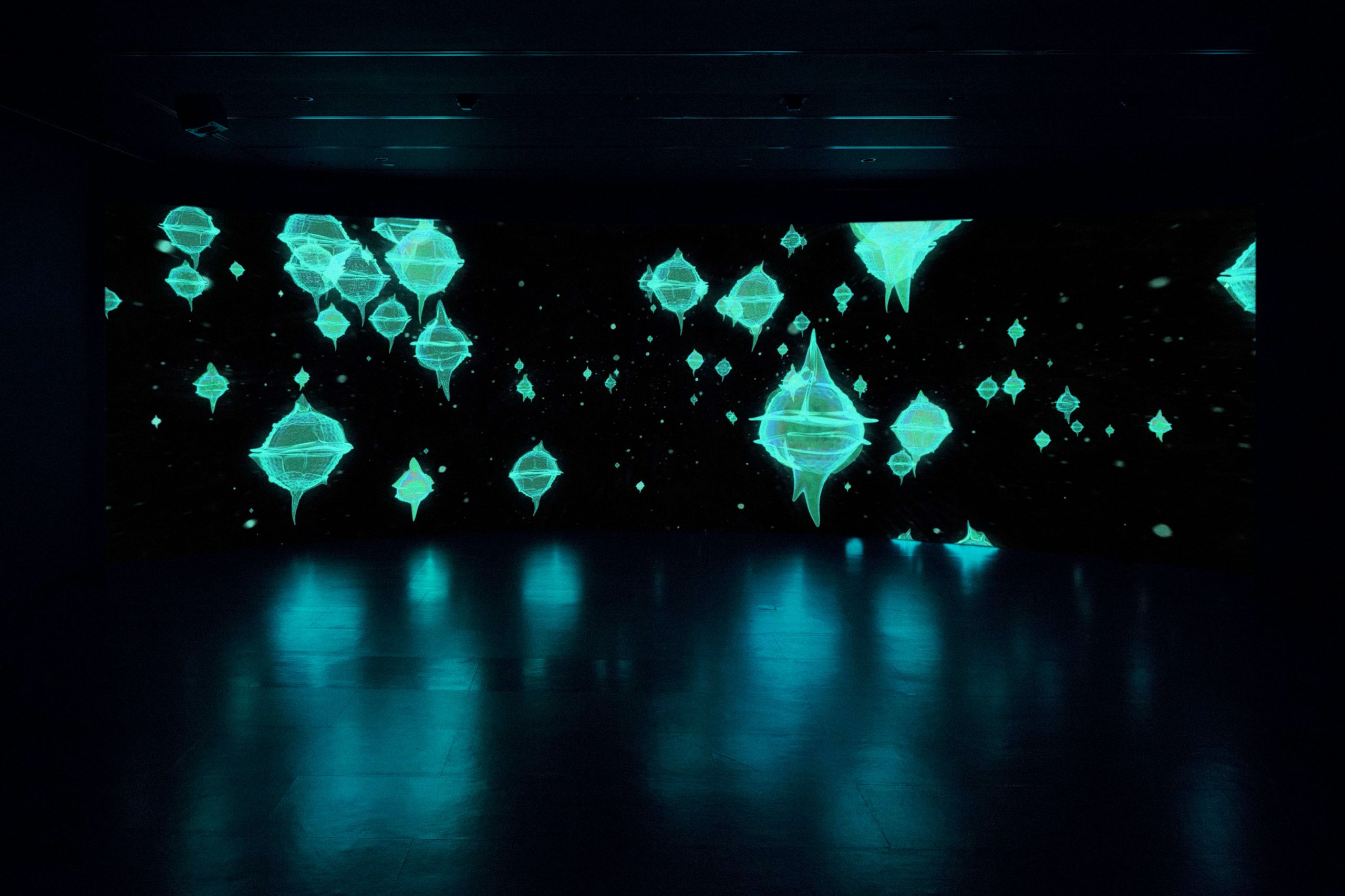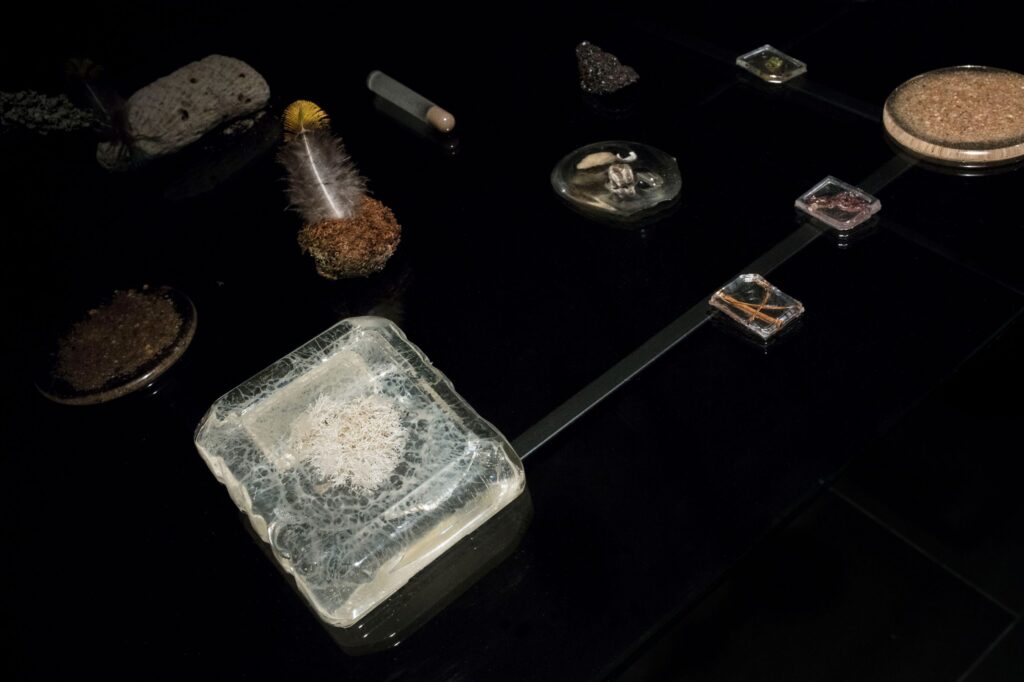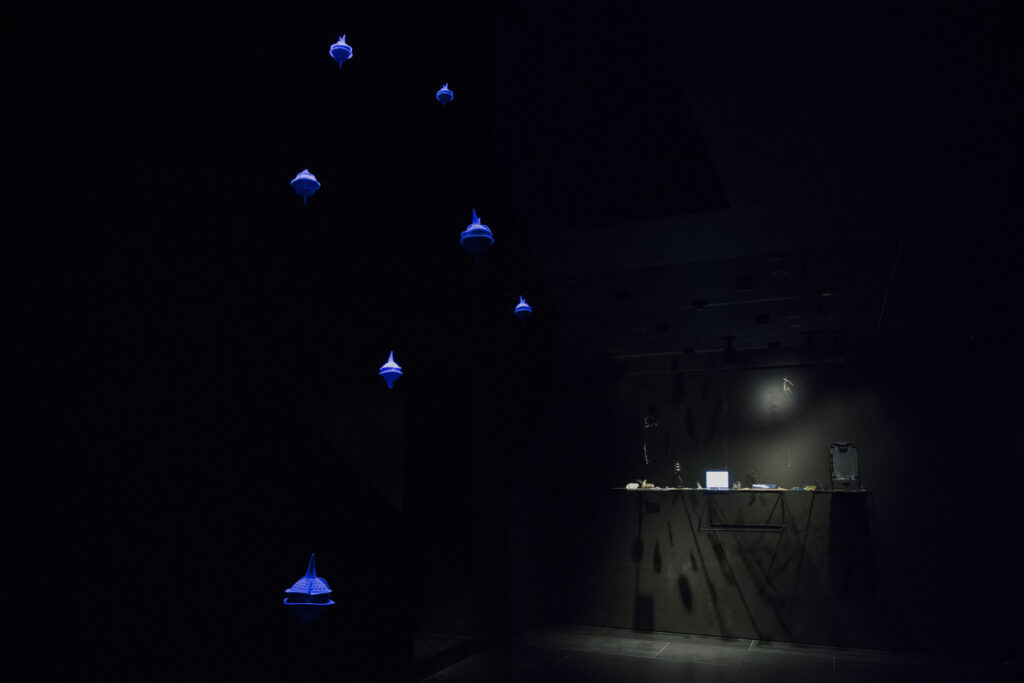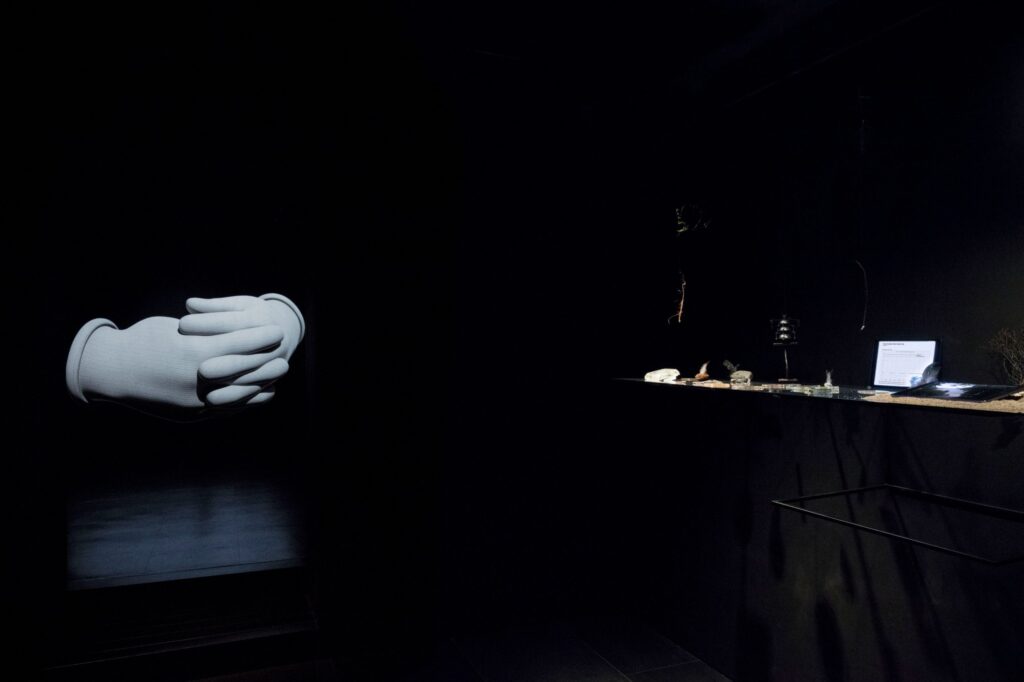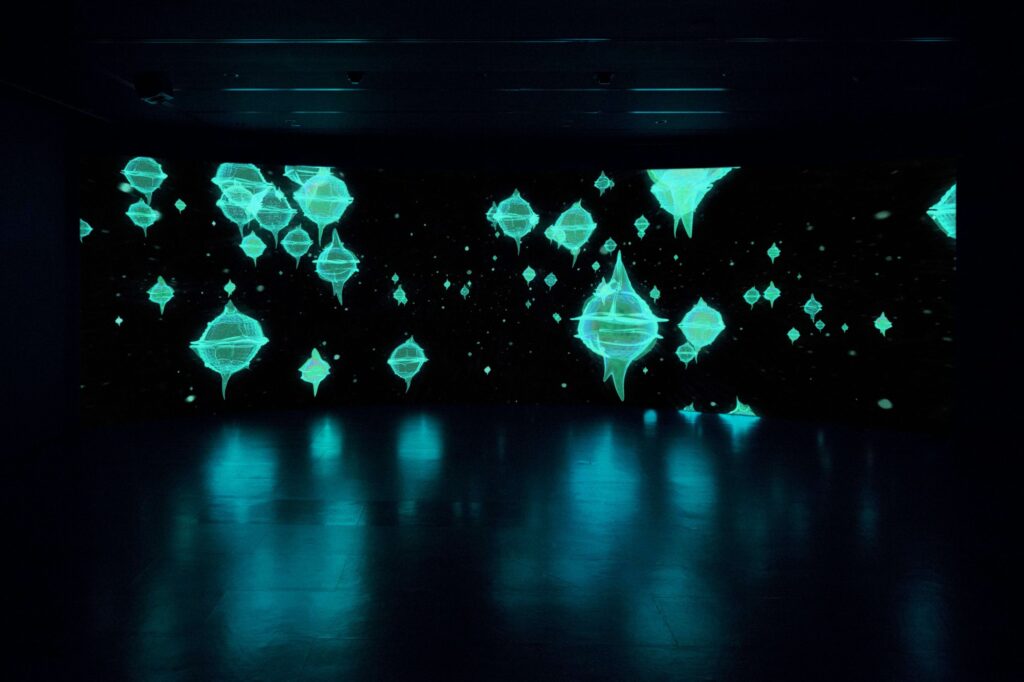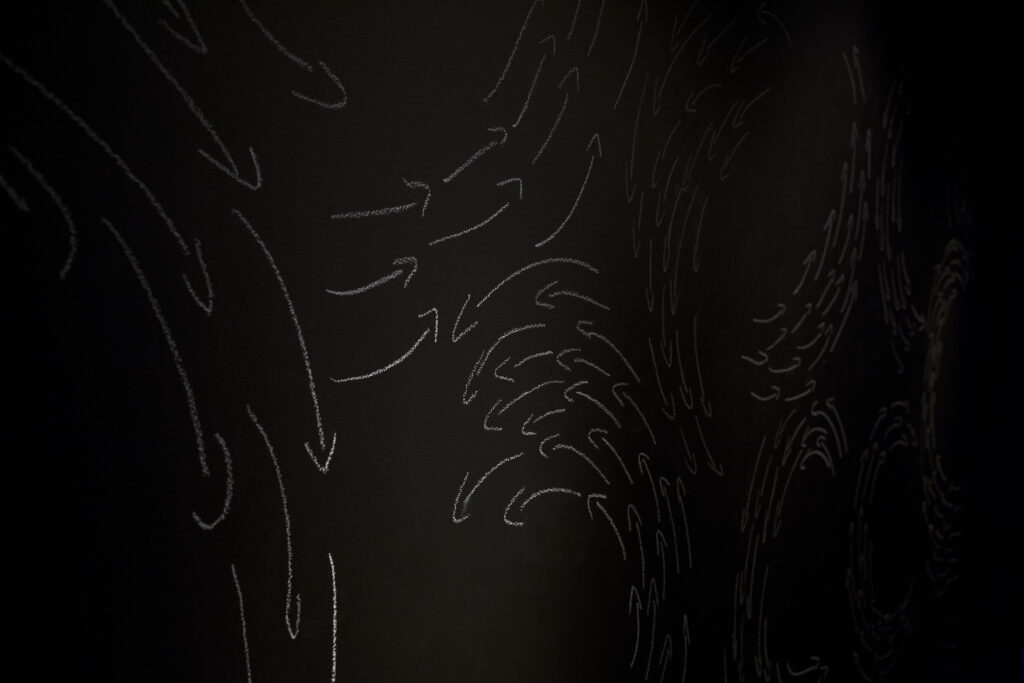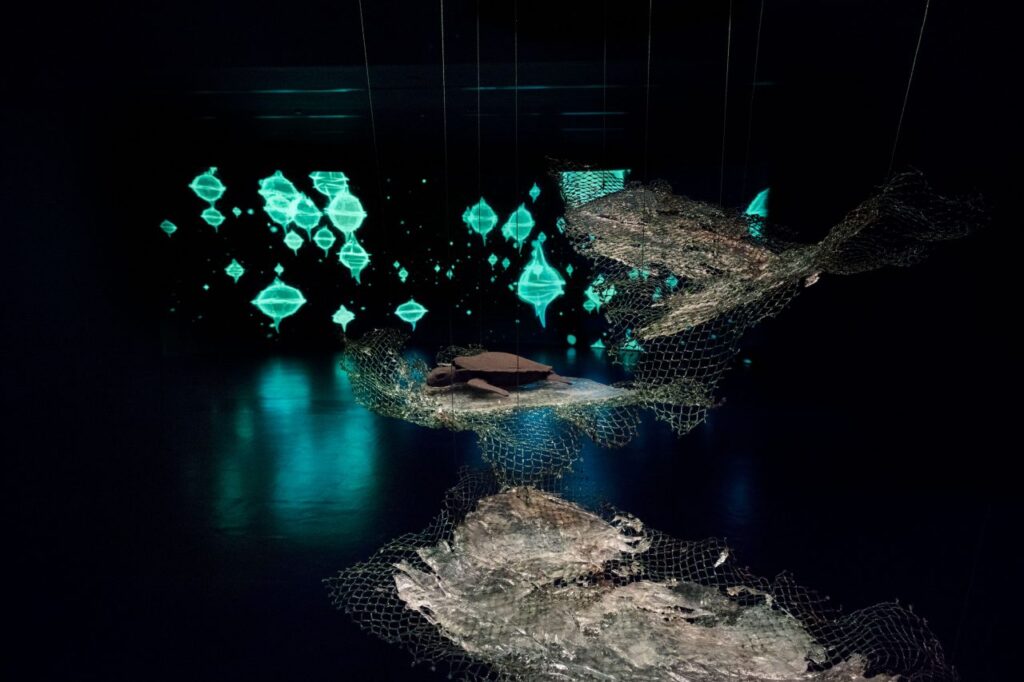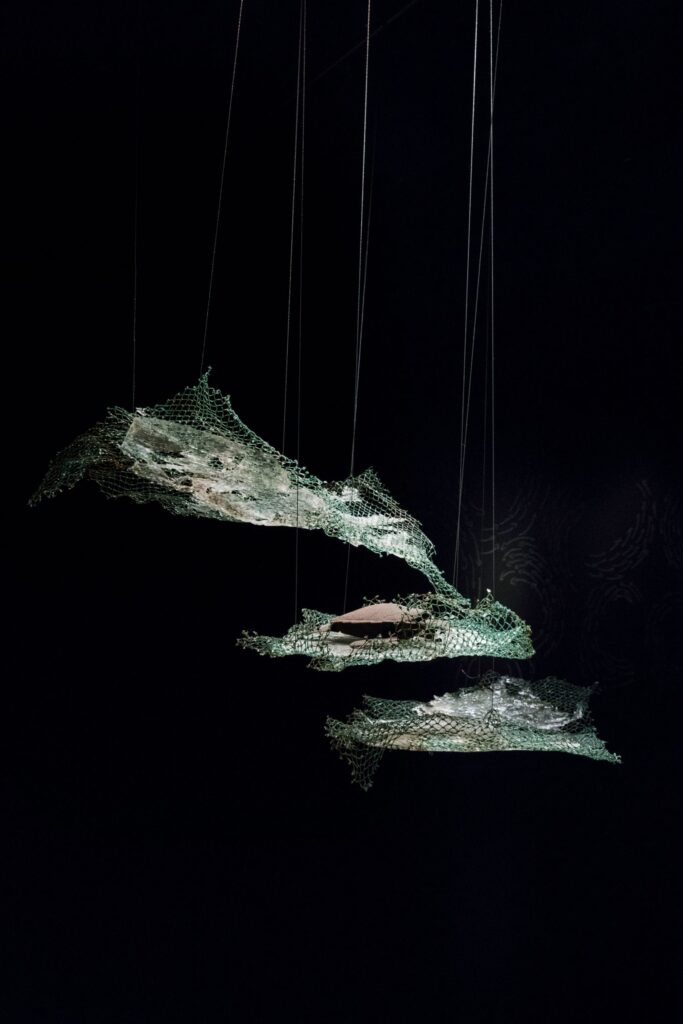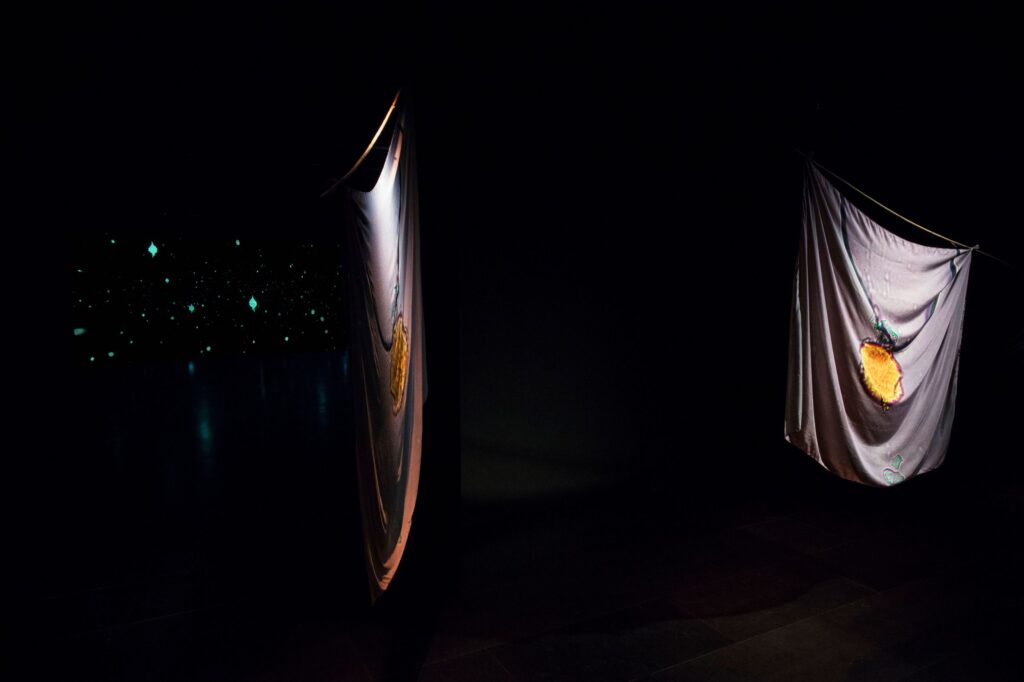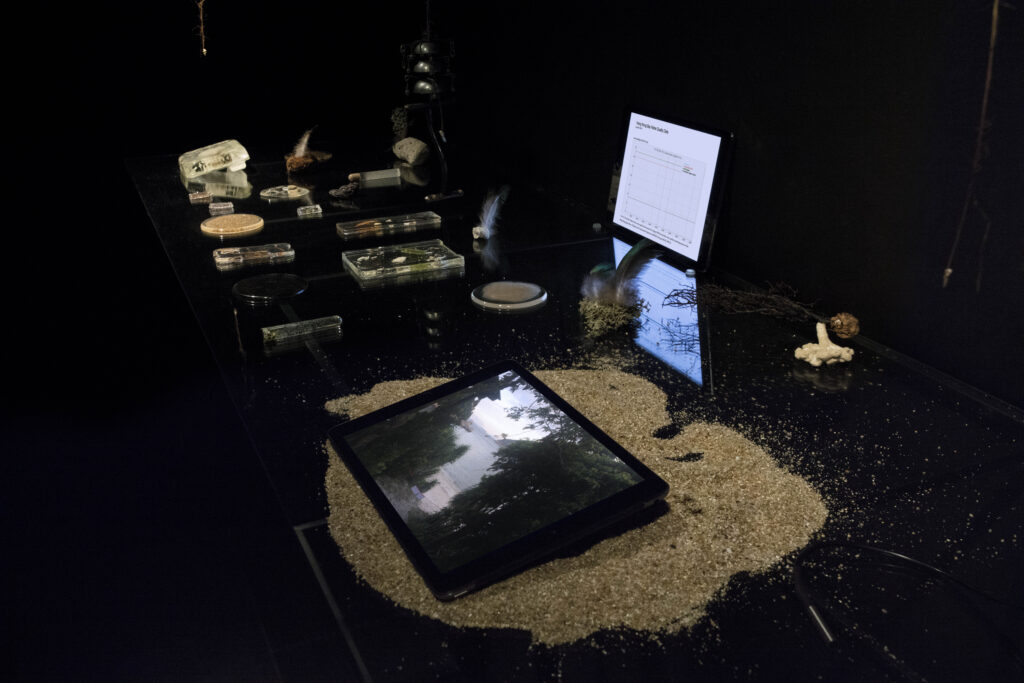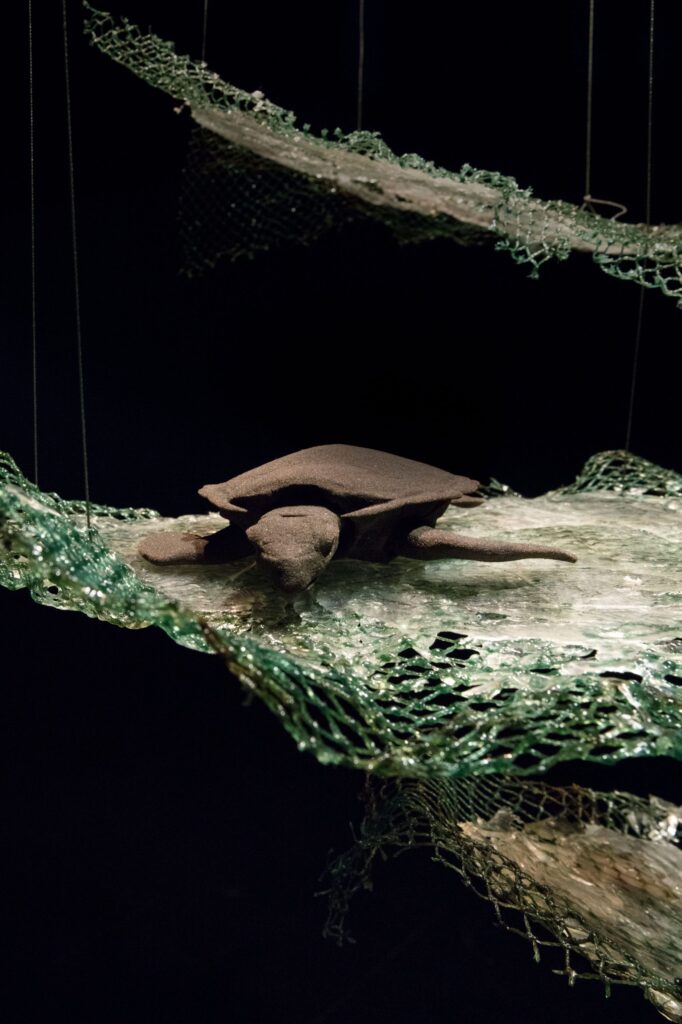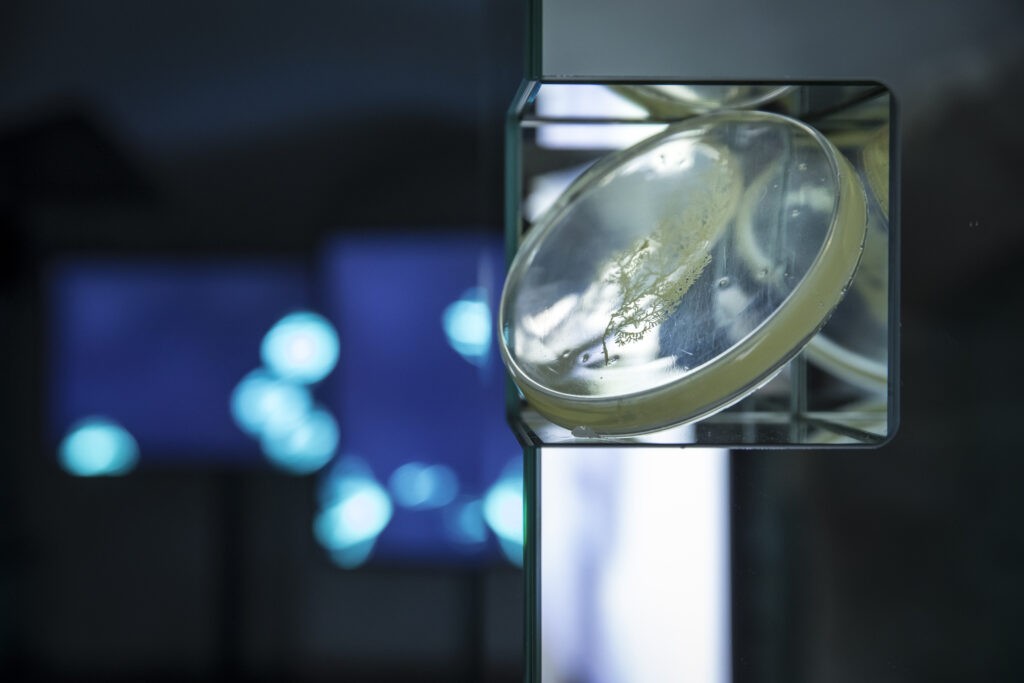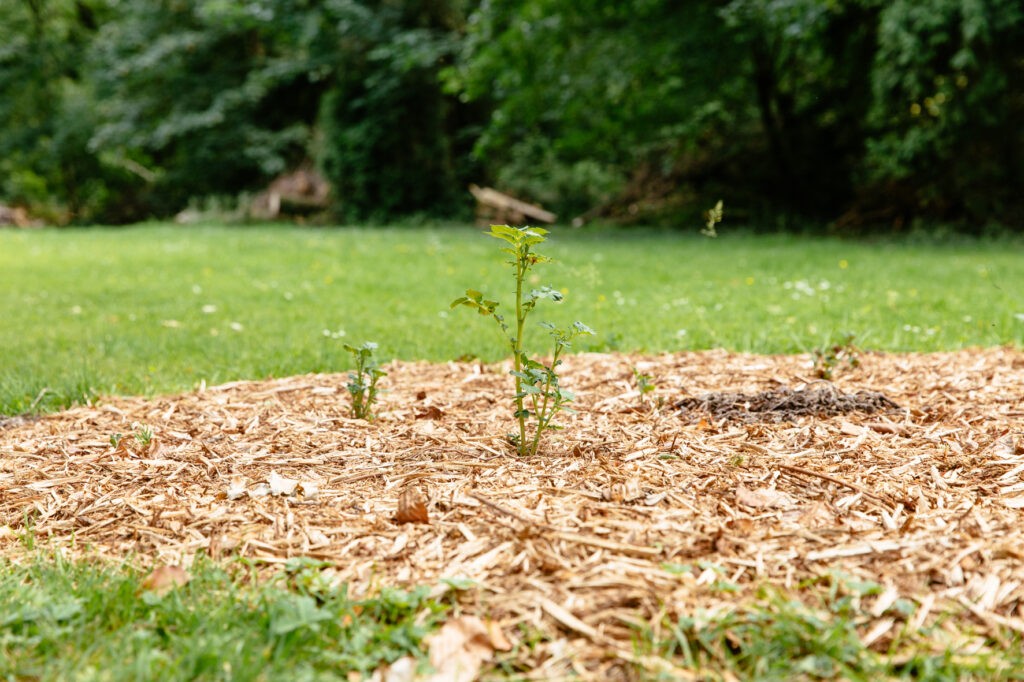The exhibition gravitational currents & the life magic (2018) at Empty Gallery in Hongkong as well as other recent works of Winterling, explore the relationship between marine ecology, climate change, and the Capitolocene through an ecological worldview, where the main protagonists are the microorganisms known as dinoflagellates or dinos.
About ten years ago a cluster of these magical species with the force of their toxic and magic qualities kidnapped the artist and made her work for them. They now populate exhibition spaces and research in a multitude of familiar and unfamiliar forms. They appear as 3D-printed sculptures illuminated by UV light, microscope photographs, and pulsating CGI renders. They nag about the entanglement of ecological and social justice, which according, to them humans hardly grasp. These creatures play an invisible but crucial role in the maintenance and self-renewal of marine ecosystems, providing a foundation for the continued existence of more familiar life-forms such as plants, fish, and even ourselves. They are also at the origins of this planet. While Winterling has previously likened bioluminescent varieties of dinos – which emit light when moved or touched – to touch-screen technology, these creatures might also be considered live sensors or intelligent monitors in an altogether different manner.
Works included in the show are amongst others the planetary opera in three acts, divided by the currents (2018), a composition of natural and synthetic, as well as documentary and imaginary sounds, including hydrophone recordings of algae, the sound of green turtles hatching, crabs rubbing their claws together and other ecological marvels. The opera is accompanied by the planetary loop of gravitation (2018) which immerses the spectator in a field of floating particles (at once reminiscent of the sky, the deep sea, and interplanetary space) as gargantuan algae whirl and dance around them.
Both of these pieces enact a sensory inversion of the dominant anthropocentric logics, which govern our awareness, through their dramatic reversals of scale and focus, deploying historical forms of media usually associated with the internal drama of men, to instead, express the drama of the planet. Participants are immersed within a grand marine imaginary which aims to generate a new sense of interspecies alliance with the creatures that dwell within planetary space and through the currents.
